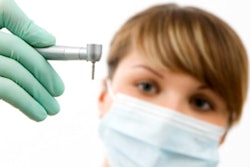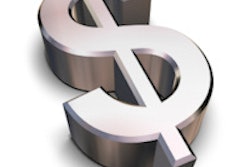
Spending on dental care remained flat between 2013 and 2014, continuing a multiyear trend, according to a new research brief from the ADA's Health Policy Institute. Dental care comprised 3.7% of U.S. healthcare spending in 2014, down from a peak of 4.5% in 2000.
 Marko Vujicic, PhD, chief economist and vice president of the ADA Health Policy Institute. Image courtesy of the ADA.
Marko Vujicic, PhD, chief economist and vice president of the ADA Health Policy Institute. Image courtesy of the ADA.Americans spent $113.5 billion on dental care in 2014, up from $112 billion in 2013, according to the Centers for Medicare and Medicaid Services (CMS). Dental expenditure per capita rose from $349 in 2013 to $351 in 2014, reversing a downward trend that began in 2010, noted authors Thomas Wall and Marko Vujicic, PhD.
Their report focuses on the five years since the end of the economic recession, 2010 to 2014.
"Through most of this period, dental expenditures continue to be flat -- a clear indication that the dental economy is not rebounding significantly," the authors wrote. "One of the key drivers of the slowdown was a decrease in dental care use among working-age adults."
Between 1990 and 2002, per-capita dental care spending grew 3.9% per year, slightly faster than for overall healthcare. However, from 2002 to 2008, spending on dental care dramatically dropped by nearly half, to 2% annually, well below the growth rate for overall health expenses. Since 2008, dental spending per capita has declined -- although at a slow rate of 0.4% per year -- while overall healthcare spending has continued to grow
 All charts courtesy of the American Dental Association. Reprinted with permission. All rights reserved. Any form of reproduction is strictly prohibited without prior written permission of the American Dental Association. Originally published by the Health Policy Institute.
All charts courtesy of the American Dental Association. Reprinted with permission. All rights reserved. Any form of reproduction is strictly prohibited without prior written permission of the American Dental Association. Originally published by the Health Policy Institute.

Medicaid
There were small increases in the share of dental costs paid for by public sources such as Medicaid and private insurance from 2013 to 2014, coupled with corresponding drops in the share of out-of-pocket dental costs, according to the report.
The same shift away from out-of-pocket financing toward public financing also occurred for healthcare spending. However, the big difference is that dental care is overwhelmingly paid for by private dental insurance and out-of-pocket spending, a very different mix than healthcare costs, the authors pointed out.

"A key trend since 1990 is an increase in the share of dental expenditure financed by public sources (from 2% in 1990 to 11% in 2014) and a decrease in out-of-pocket spending," they wrote.
There has been a long-standing trend of increased dental care utilization among Medicaid children, as well as more Medicaid adults accessing dental care, as a result of Medicaid expansion by the states as part of the Patient Protection and Affordable Care Act (ACA), according to the researchers.
Since dental care utilization patterns play a big role in the trajectory of dental spending, it is important to note that in 2013, for the first time since 2007, dental care utilization did not decline among working-age adults, they noted.



















